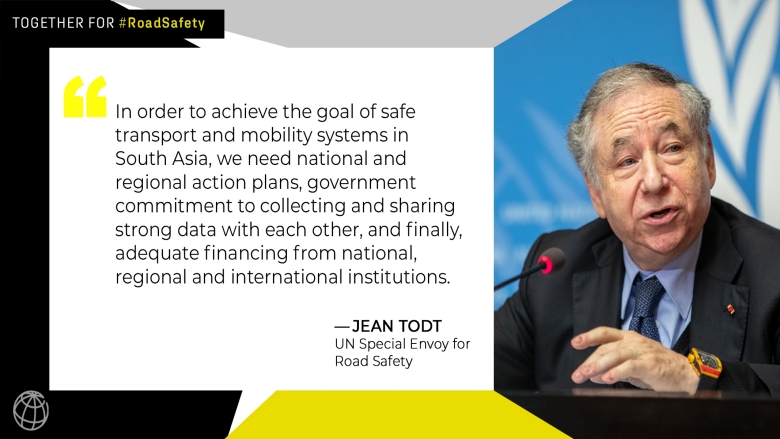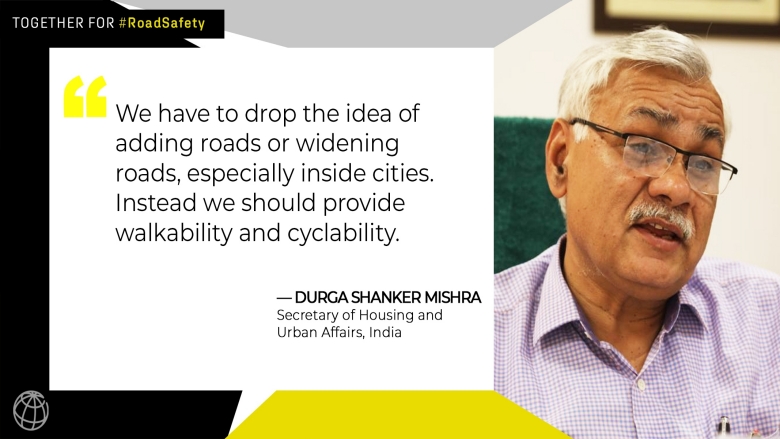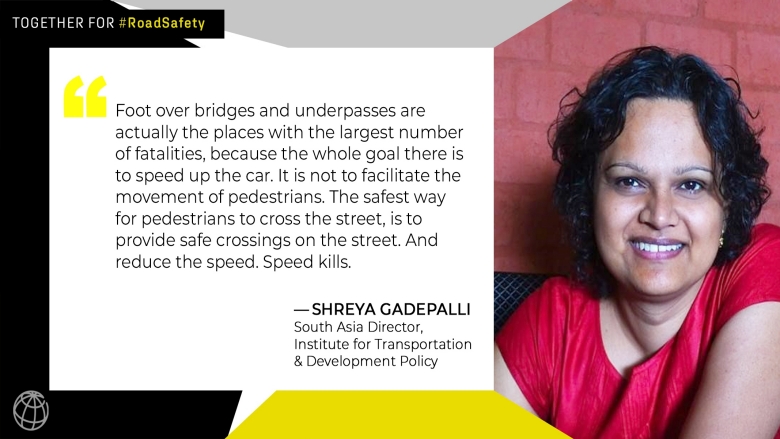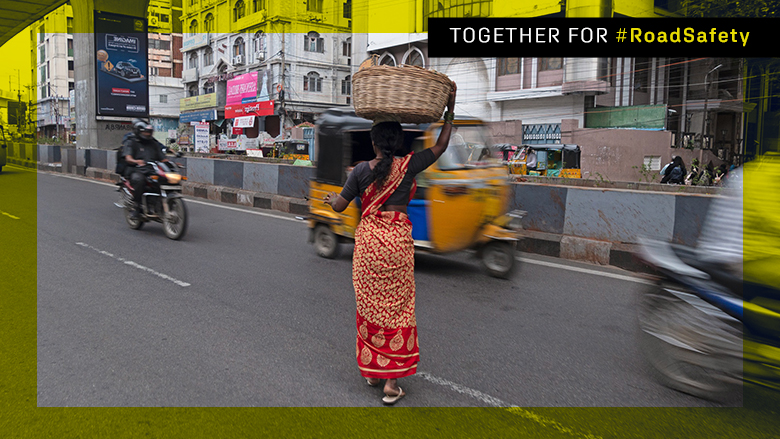Every other minute, a person dies as a result of road crashes in South Asia. More often than not, those affected disproportionately, are the poor or those who are vulnerable road users like pedestrians and cyclists. This is not only a public health crisis – it is a critical development priority, with strong impact on health, human capital and economic growth.
As countries fight COVID-19, it has become even more important to think consciously about road safety. Road crashes take away vital medical resources which are already being stretched to the limit. The pandemic has also deeply impacted mobility in South Asian cities, disrupting public transport, and reemphasizing the unsafe conditions for walking and cycling.
As part of the observance of the World Day of Remembrance for Road Traffic Victims, the World Bank organized a high-level virtual discussion on Road Safety in South Asia – Rethinking Urban Mobility Amid COVID-19.
This event brought together policymakers, development partners and civil society leaders to discuss how cities in South Asia can keep moving safely in the aftermath of COVID-19 and utilize this window of opportunity to rethink mobility.

During the event, Hartwig Schafer, World Bank Vice President for South Asia and Jean Todt, the UN Special Envoy for Road Safety reemphasized the goal of halving road crash fatalities by 2030, building on the momentum of the Stockholm Global Ministerial Conference on Road Safety. This, as Todt emphasized, must be brought to reality by collective action from governments in the region and adequate funding from regional, national level as well as international institutions.
International experience and knowledge sharing are also key. During the event, speakers gave many examples of best practices and successful initiatives globally and in South Asia on making urban roads safer and more people oriented. Claudia Adriazola-Steil of the WRI Ross Center for Sustainable Cities spoke about how the Netherlands started changing how they planned urban transportation in the 1970s. Today the country has one of the lowest road crash rates globally. Similarly, Durga Shanker Mishra, Secretary of Housing and Urban Affairs of India highlighted cities like Chennai and Pune, that are moving towards a future focused on safe and reliable non-motorized transport connections.

Understanding and execution of transportation planning needs to change and move away from a car-centric approach towards a people-centric approach and embrace street design and policies that empower and give freedom of safe movement to people instead of vehicles. As Shreya Gadepalli, South Asia Director of the Institute for Transportation & Development Policy (ITDP) pointed out, a starting point is to conduct a city-wide survey to find out what citizens really want – “all citizens, not only car-owners”. For major Indian cities this showed that people want safe spaces to walk and cycle.
Planning safer streets also requires a systematic approach and a reorientation towards the needs of pedestrians and cyclists, the most sustainable and healthiest modes of transport. The COVID-19 lockdowns triggered higher rates of cycling and walking in cities across the globe. Like many cities globally, South Asian leaders need to push the envelope to redistribute urban space to pedestrians and cyclists. As Atiqul Islam, Mayor of Dhaka North City Corporation, Bangladesh, said, “We have to make our city’s people safe for their mobility. We want to make a city that everyone can use.”

Going forward, Secretary Mishra clearly laid out his objectives - Retrofitting of built up space to ensure walkability and cyclability for people; Redevelopment of cities considering accessibility for people by public transit, walking and cycling first; and, Green development – planning for an easy accessibly city with short distances.
There is still a long way to go to reach the goal of safe streets for all, yet change is on the horizon and pedestrians and cyclists are on the forefront of it.
Check out our campaign Together for Road Safety and watch full event on World Bank Live.


